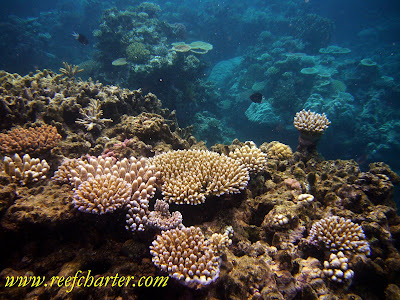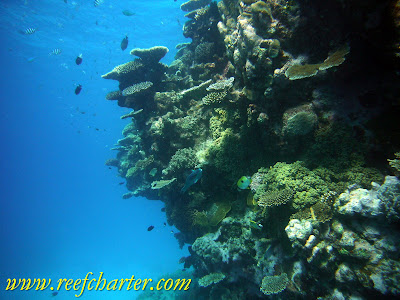A lot of our readers have asked for a brief history and background on coral reef formations. I’ll try not to bore everyone. Believe me it makes a better discussion when we are sailing or diving on the reef. The Great Barrier Reef is that like every other ecosystem in world. It’s life-cycle is far greater then man’s living history and we are only just starting to understand this complex underwater world. Most research only dates back 30 years and many data points are close to shore and don’t cover the full extent, depths and variety of coral reefs.
As far as the history of the world goes, reefs appear to be a fairly new phenomenon, only one million years old, a bit older than all of us. The earliest signs of the Great Barrier Reef appeared just over 500,000 years old. Just some background here that a lot of people are unaware of, regardless of what the press etc have been reporting, seas rise and fall naturally and have been doing so since time began. During the rising phase, without human interaction, seas rise about 10m every thousand years. Over the last 500,000 years we have undergone the rise and fall of oceans just under 20 times. The current Great Barrier Reef started growing between 6 and 9,000 years ago, that is when sea levels rose over old underlying reefs and corals started growing. Sleepy yet?
So when the sea level rises the coral reefs take full advantage and often the grow faster then the sea level rises. The coral keeps growing towards the surface, like a plant towards the sun, until the reef flat is exposed at low tides (sea level). When the coral reefs reach the surface, the growth stops or slows and the battle between mother nature and the reef continues. Strong winds, storms, predators, the summer heat, as well as numerous other factors are continually impacting the reef.
So how does the reef survive this continual attack? Well, corals have evolved over thousands of years to survive this delicate ecosystem. So a couple of things:
-When coral spawns it can only successfully seed and grow if the spot it comes to rest on is clean. That means no algae or live coral. So all the damage above actually makes way for the next generation of corals.
– These cycles are natural and the Great Barrier Reef has survived these impacts for hundreds of thousands of years.
– We know from core samples taken around the world that reefs are very resilient to natural events. Only a few species have become extinct over the last 100,000 years.
– Different types of corals grow at different rates so reefs have the ability to reclaim themselves very quickly and then diversify over time as long as there is “seed” coral remaining or another reef nearby.
Coral Reefs build up slowly towards the surface, building upon the growth of previous generations as well as dead coral caused by the impacts above. This is how snorkellers and divers get to enjoy the reefs everyday around the world. By minimizing our impact on the reef we can make sure that this cycle continues.
-Follow reef safe diving and snorkeling practices.
-Reducing major pollutants that have impact on coral growth to ensure that we do not wipe out entire reef systems.
Comparing samples from older reefs to the newer reefs we see that much more damage is happening with much more frequency and to date most reefs have proven resilient. Reefs closer to major human population centres have suffered the most impact. As long as we minimize our impacts, we can be pretty sure that these amazing ecosystems will continue to inspire generations to come.


Great post! Protecting the reefs is very important! Good to know that they are so resisliant. I didn’t realize that they could grow with such relative ease, taht gives me hope that we will in fact be able to preserve them! Thanks!!
A very educational post. Thank you.